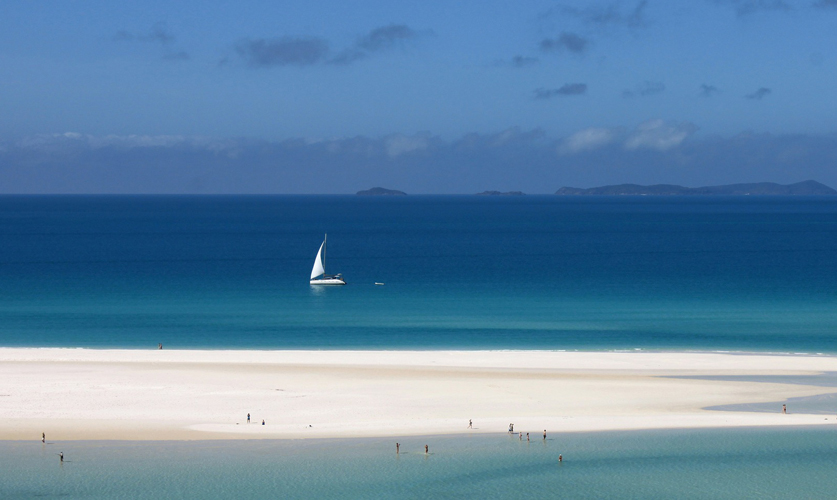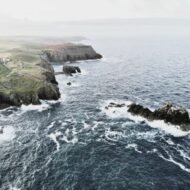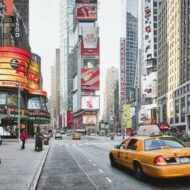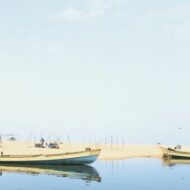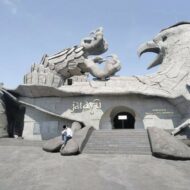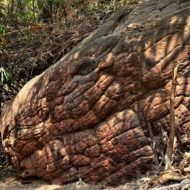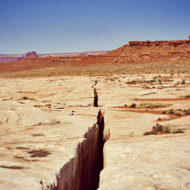The Great Barrier Reef off the northeast coast of Australia is the largest contiguous collection of over 2,900 individual coral reefs on earth. In 1981, The crew of HMS Endeavor were the first Europeans to see the Great Barrier Reef under the command of the British sailor James Cook when he sailed from Botany Bay along the east coast of Australia during his first South Sea voyage (1768-1771) of the Cape Tribulation ran aground on June 11, 1770. it was declared a World Heritage Site by UNESCO and is also referred to as one of the seven wonders of nature.
The Great Barrier Reef extends northeast on the east coast of the state of Queensland in the Coral Sea from the Torres Strait to Lady Elliot Island, which is located about 75 kilometers northeast of Bundaberg. In the course of its evolution, it has grown to a length of over 2,300 kilometers, reaching an extent from the 10th to the 24th southern latitude.
The reef runs on the eastern edge of the Australian continental shelf.
The reef runs on the eastern edge of the Australian continental shelf.
It is located between 30 kilometers (at Cairns) and about 250 kilometers (at Gladstone) from the almost parallel running Australian east coast. In the waters of the Great Barrier Reef are about 1,000 islands, such. Whitsunday Islands or Dunk Island, and numerous sandbanks. The area of the Great Barrier Reef is about 347,800 km² and can be seen with the naked eye from space.
ecosystem
Coral reefs are very sensitive ecosystems. Any change can cause unpredictable damage.Corals can only live in clear, sun-drenched waters with a very limited temperature range, between 18 and 30 degrees Celsius.The Great Barrier Reef, with its 359 species of stony coral, is the largest living creature on earth. It provides habitat for a variety of other species, Among them are 80 species of soft corals and sea feathers, over 1,500 species of fish, 1,500 sponge species, 5,000 species of mollusks, 800 species of echinoderms such as starfish, 500 different species of seaweed and 215 species of birds.
ecosystem
Coral reefs are very sensitive ecosystems. Any change can cause unpredictable damage.Corals can only live in clear, sun-drenched waters with a very limited temperature range, between 18 and 30 degrees Celsius.The Great Barrier Reef, with its 359 species of stony coral, is the largest living creature on earth. It provides habitat for a variety of other species, Among them are 80 species of soft corals and sea feathers, over 1,500 species of fish, 1,500 sponge species, 5,000 species of mollusks, 800 species of echinoderms such as starfish, 500 different species of seaweed and 215 species of birds.
Six of the seven species of sea turtles that occur worldwide are found in the Great Barrier Reef. Also threatened with extinction are the dugongs (manatees) living there.
Due to the dimension, the Marine Nature Park is divided into several sections for better distinction. These are from north to south: Far Northern Section, Northern Section, Cairns Section (also Tropical Northern) ,Central Section (also Whitsunday Section),Southern Section (also Mackay Capricorn Reefs).
Today ,the reef is a very popular destination, especially for scuba divers. There are about 820 reef vendors providing approximately 1,500 boats, helicopters, and light aircraft for touring the reef. They operate from the coastal cities, with a variety of boat tours and cruises to be offered, from single day trips, to longer voyages with 85 percent of tourism concentrated on the two cities of Cairns and Airlie Beach.
Ideal diving and snorkeling areas are located on the outer belt of the reef, the Outer Barrier. Favored by the proximity to the open sea, the visibility under water is increased, since less sediment can settle in the water.
Access : Coordinates: -18.283333, 147.7 / Starting points: Cooktown, Port Douglas, Cairns, Mission Beach (highly recommended), Townsville (Queensland) / The easiest way to visit is to book an organized day trip on a catamaran.
Cairns Harbor is considered to be the starting point for the reef, but boats also leave Airla Beach, Cucuta, Port Douglas, Mission Beach, Townsville and Yeppoon./Daily trips to the reef are carried out most of the Quinnland coastline. Generally , the more north, the smaller the trip to the reef as it approaches the coast near Cape Tribulation /
Highlights :
- The southern part of the reef outside Townsville is known mostly for its Yongala shipwreck, which is visited by both dive schools and independent travel agents.Access In the area from Townsville, Ayr (Queensland) and Magnetic Island.
- Great Barrier Reef Marine Park : Park protects a large part of Australia’s Great Barrier Reef from damaging activities , is strictly regulated, and commercial maritime traffic must adhere to certain specific shipping routes that avoid the most sensitive areas of the park
- Islands : Green Island , just 27 km offshore from the tropical North Queensland city of Cairns / Fitzroy Island , Fitzroy Island is an island in the Great Barrier Reef, close to the Australian city of Cairns./ Lizard Island , Lizard Island is an island in the northern reaches of the Great Barrier Reef off the coast of Queensland, Australia.
- Reef islands : Group of islands off the Queensland Coast ,Many offering facilities accommodation ,Many cater for day trips,The islands that are not on the reef, generally run some sort of day trip by boat to the reef.
- Whitsunday Islands : a group of 74 islands that lie off the coast of Queensland, Australia and form part of the Great Barrier Reef.
- Bentara Island : Private island between the Great Coral Reef and South Missouri Beach on the mainland. The island is a luxurious resort consisting of 16 villas built in lush tropical forest.
- Pumpkin Island : Here you will find only five very elegant, ecological, self-contained country houses overlooking a crystal-clear beach.
Activities : Snorkeling and diving : Ideal diving and snorkeling areas are located on the outer belt of the reef, the Outer Barrier. Favored by the proximity to the open sea, the visibility under water is increased, since less sediment can settle in the water.They protect against sharks and moray eels, but also prevent the drifting away of careless swimmers. But good observation possibilities also offer/
/ Glass-bottom boat tours / Helicopter sightseeing flights / Reef Tours
Stay safe : There are reef dwellers with unpleasant character: u.a. Stonefish, Coneshell, Blue Ringed Octopus and Box Jellyfish ,occurs around October to April, during which time you can not swim in the sea!.
Go next : Queensland / Magnetic Island / Whitsunday Islands : Whitehaven Beach / Bunya Mountains National Park / Carnarvon National Park / Cape Tribulation , a headland and a village in northern Queensland / Glass House Mountains National Park.




